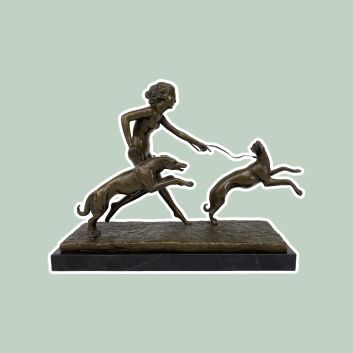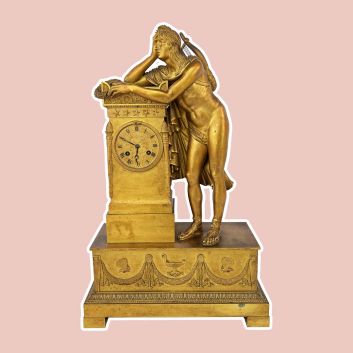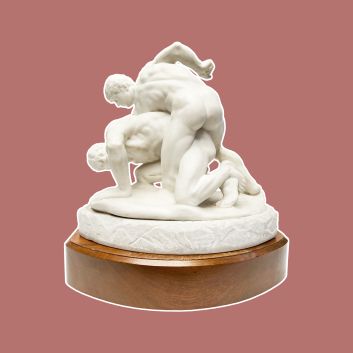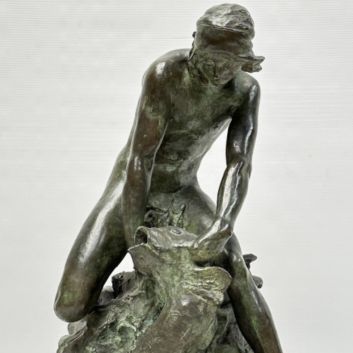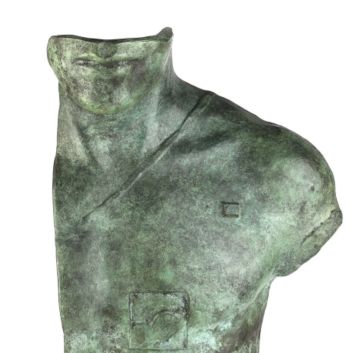Cote et valeur des statues, bronzes, marbres de Pierre Traverse
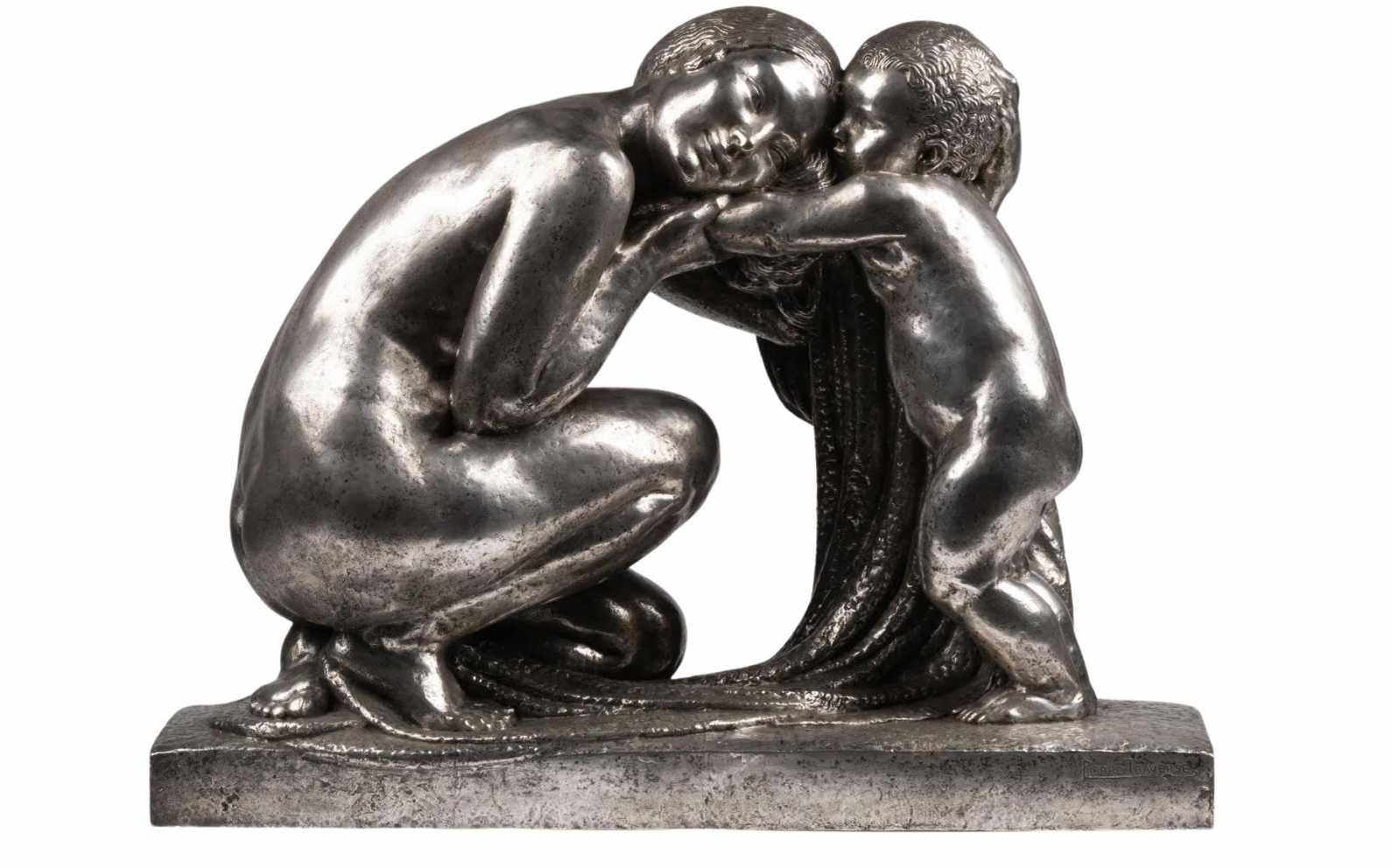
Si vous détenez une œuvre réalisée par Pierre Traverse ou d’après lui, et que vous souhaitez connaître sa valeur, nos experts et commissaires-priseurs agréés par l’État vous offriront leurs services d'expertise.
Nos spécialistes s’emploieront à réaliser une expertise gratuite de votre œuvre, et vous transmettront une estimation précise de sa valeur sur le marché actuel.
Par la suite, si vous désirez vendre votre œuvre, nous vous orienterons vers le meilleur dispositif possible pour en obtenir un prix optimal.
Cote et valeur des œuvres de Pierre Traverse
Pierre Traverse a produit des sculptures uniques. Les plus célèbres sont celles de Limoges, souvent présentes aux enchères. Désormais, les prix de ces créations peuvent augmenter considérablement au marteau des commissaires-priseurs.
Ses sculptures sont particulièrement prisées, par les acheteurs du monde entier. Le prix auquel elles se vendent sur le marché de l’art s’échelonne entre 30€ et 18 000€, pour le moment, un écart conséquent mais qui en dit beaucoup sur la valeur qui peut être attribuée aux œuvres de Traverse.
En 2015, sa sculpture en bronze Femme nue et une gazelle a été vendue à hauteur de 32 280€, estimée à l’origine entre 11 740 et 17 600€.
Ordre de valeur allant d’une œuvre simple à la plus prestigieuse
Technique utilisée | Résultat |
|---|---|
Terre cuite | De 180 à 6 000€ |
Céramique - porcelaine | De 350 à 6 150€ |
Bronze | De 900 à 32 280€ |
Réponse en - de 24h
Style et technique de l’artiste Pierre Traverse
Pierre Traverse s’illustre par des sculptures aux lignes élégantes et épurées, réalisées dans divers matériaux comme le marbre, le bronze, et la pierre, mais également la terre cuite, qui lui permet des effets de texture plus doux.
Son style reste ancré dans une esthétique classique, empruntant aux formes harmonieuses et idéalisées des débuts du XXe siècle, avec une attention particulière aux proportions et à l’équilibre des volumes.
Bien qu’on ne lui attribue pas directement d’appartenance à un mouvement spécifique, certaines de ses œuvres révèlent une influence discrète de l’Art Déco, perceptible dans la précision des détails, la stylisation subtile des silhouettes, et la modernité sobre de ses compositions.
Traverse privilégie les thèmes intemporels, puisant dans le répertoire mythologique et la figure humaine pour traduire une beauté universelle et apaisante.
Son travail s’inscrit dans une tradition sculpturale qui valorise la finesse de l’expression humaine et la noblesse des matériaux, chaque pièce étant pensée comme un hommage à la forme et à la matière dans leur plus pure simplicité.
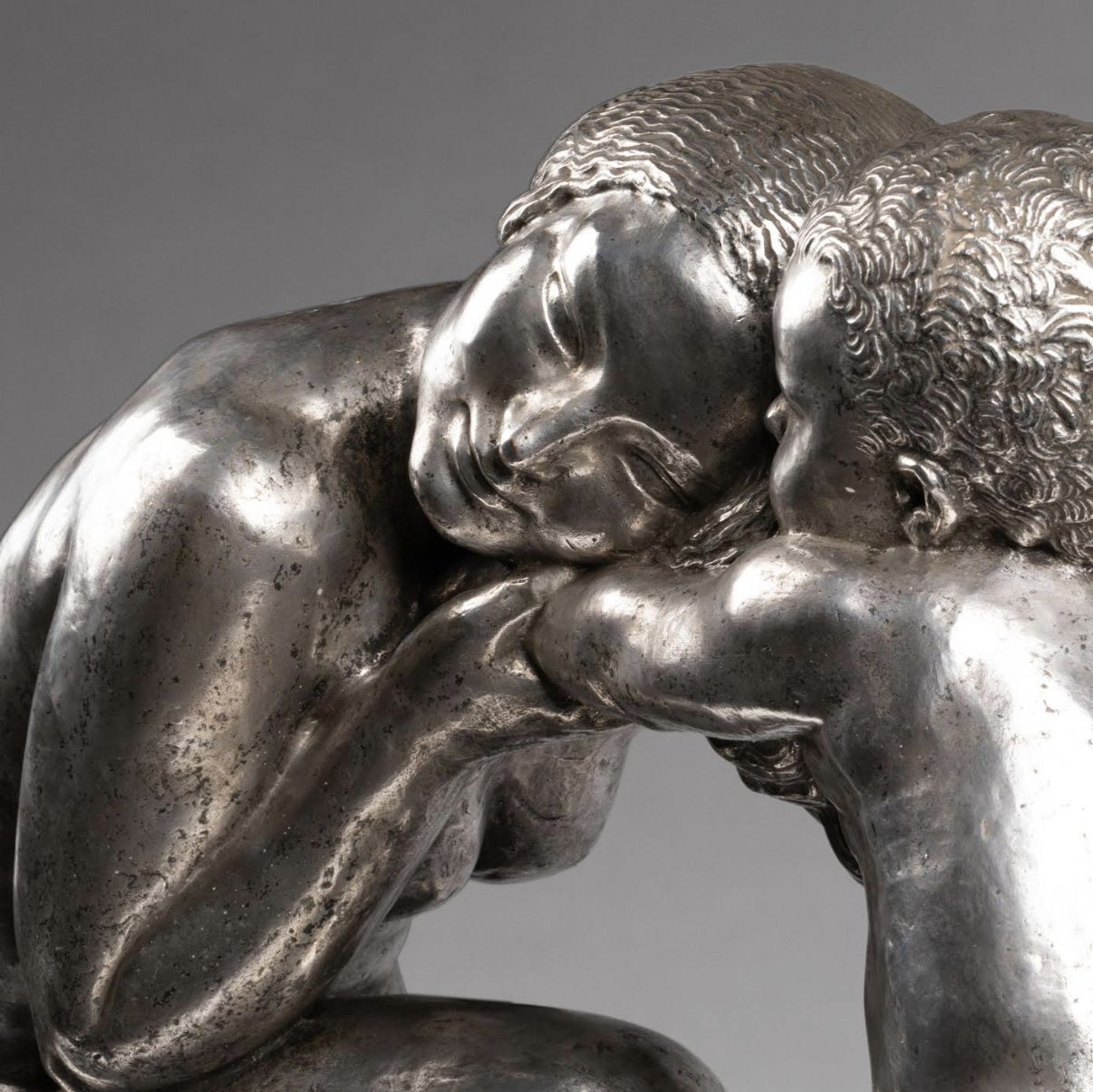
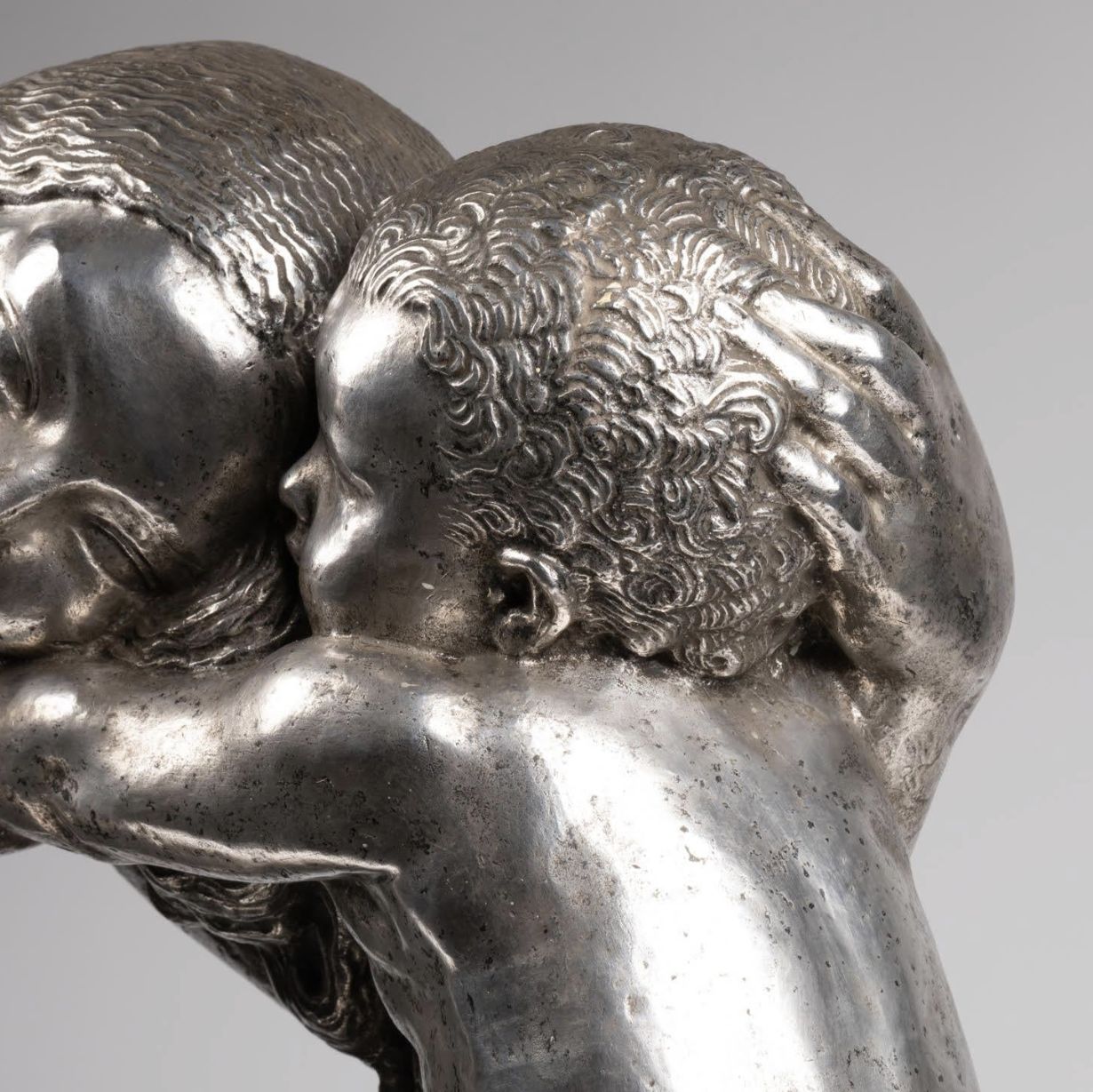
La vie de Pierre Traverse
Pierre Traverse (1892 – 1979) est un sculpteur français né à Saint-André-de-Cubzac, en Gironde.
Son père, exploitant de gisements de kaolin, l’oriente très jeune vers la sculpture en l’envoyant étudier à l’école nationale des Arts Décoratifs de Limoges, où il acquiert ses premières bases techniques.
Il y développe une maîtrise rigoureuse des matériaux, avec une attention particulière pour le modelage et la finesse du détail.
En 1910, il rejoint les Beaux-Arts de Paris et intègre l’atelier de Jean-Antoine Injalbert, bien que Traverse confie plus tard que cet enseignement ne lui apportera rien de significatif.
Peu après, il retourne en Dordogne pour retrouver sa famille, mais sa carrière est interrompue par la Première Guerre mondiale : mobilisé au front, il y est blessé, ce qui ralentit son parcours artistique.
À son retour, il reprend son chemin avec détermination. Dès 1920, il expose au Salon des artistes français et capte rapidement l’attention des critiques et du public.
Ses œuvres lui valent de nombreuses commandes en France comme à l’international, notamment aux États-Unis, consolidant ainsi sa réputation.
Traverse voyage ensuite à Rome, où il affine son style, et son succès se confirme avec l’Exposition universelle de 1937, pour laquelle il réalise un groupe sculpté remarqué.
Cette pièce lui confère une reconnaissance supplémentaire et lui vaut d’être nommé secrétaire hors concours du Salon des artistes français, un titre qui souligne son importance dans le milieu artistique.
Traverse continue d’y exposer jusqu’aux années 1950, mais une critique d’André Malraux, qui déclare son style « démodé », met un terme brutal à sa carrière publique.
Pierre Traverse décède à Paris, laissant une œuvre marquée par une esthétique classique et une technique irréprochable, qui témoigne de son attachement aux formes idéalisées du début du siècle et d’une maîtrise profonde des matériaux nobles.
Exposition Pierre Traverse à Gaujac
Focus sur Jeune Fille à la colombe, Pierre Traverse
Jeune fille à la colombe de Pierre Traverse illustre bien la sobriété et la précision qui caractérisent son style. Réalisée en marbre, la sculpture représente une jeune femme tenant délicatement une colombe dans ses mains.
Traverse y adopte des lignes nettes et épurées, conférant à l’œuvre une élégance tranquille. L’expression douce de la jeune fille et la position soignée de ses mains traduisent une recherche d’harmonie et de paix, accentuée par le choix de la colombe comme symbole de pureté.
Traverse privilégie ici une composition simple et équilibrée, évitant toute surcharge décorative.
L’attention portée aux détails du visage et des mains témoigne de la maîtrise technique de l’artiste. Traverse s’applique à représenter la figure humaine dans une forme idéalisée, en parfaite conformité avec les canons classiques.
Le modelé est lisse, les traits sont adoucis, et chaque courbe semble calculée pour accentuer l’impression de calme et de retenue. Cette approche rappelle les traditions académiques et le goût de Traverse pour une esthétique intemporelle, où l’essentiel prime sur l’ornement.
La posture de la jeune fille, droite mais non rigide, exprime la sérénité propre aux sujets chers à Traverse. Ici, il se distingue par une simplicité formelle qui pourrait évoquer une certaine influence de l’Art Déco, bien qu’il n’en revendique pas les codes.
Traverse préfère s’en tenir à un style mesuré, qui met en avant la pureté de la forme humaine et la noblesse des matériaux, sans chercher l’audace ou la complexité.
Cette œuvre incarne ainsi l’attachement de Pierre Traverse aux valeurs classiques de la sculpture. Jeune fille à la colombe se situe dans une esthétique qui résiste aux tendances modernistes de l’époque, se concentrant sur un idéal de beauté apaisante et équilibrée.
Avec cette sculpture, Traverse s’inscrit dans la continuité d’une tradition artistique, célébrant l’élégance simple et la maîtrise technique, loin des courants avant-gardistes, et contribuant ainsi à affirmer la persistance d’un classicisme renouvelé au XXe siècle.
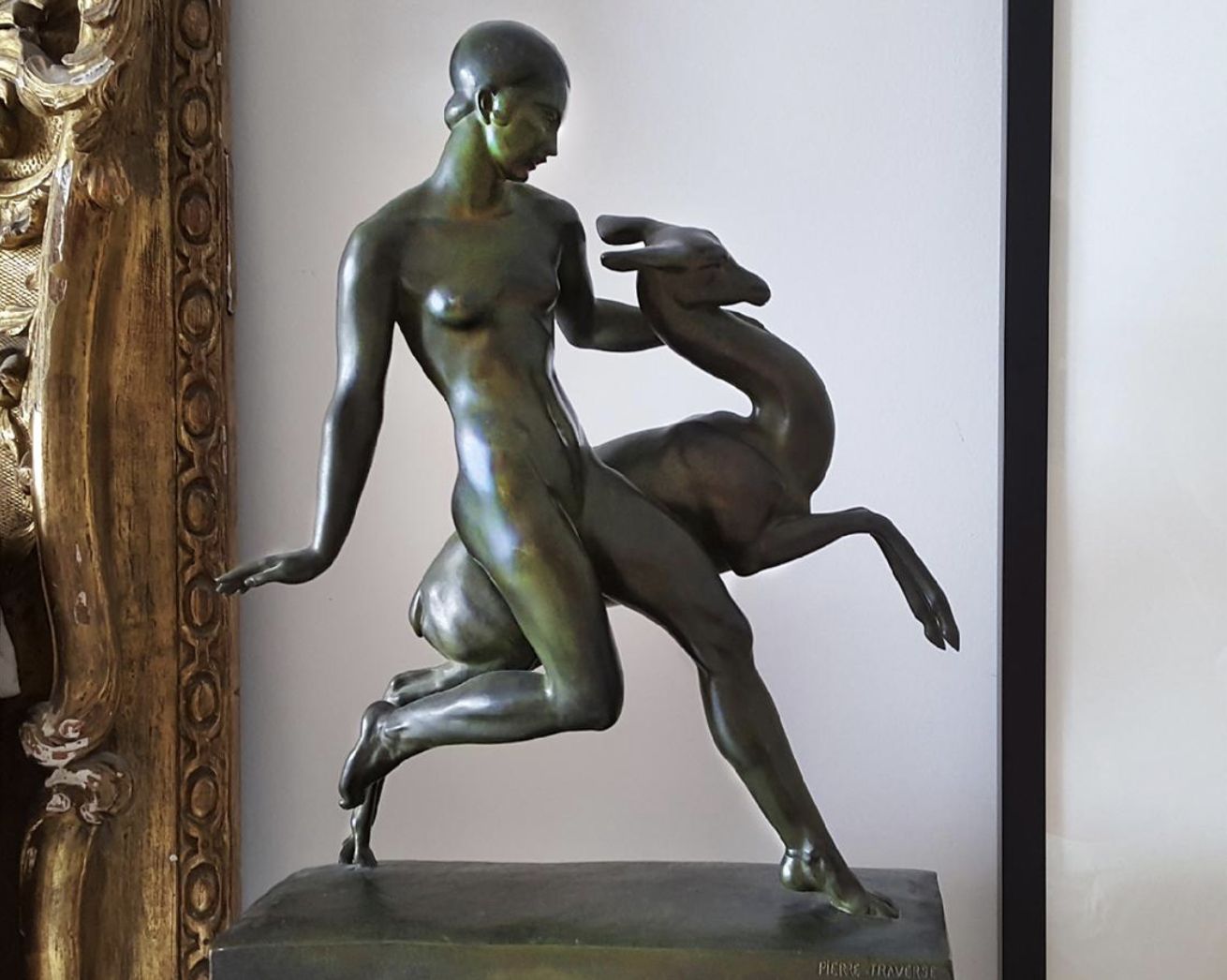
Le succès des sculptures de Pierre Traverse
Pierre Traverse laisse une empreinte discrète mais solide dans le paysage artistique du XXe siècle. Sculptant dans un style résolument classique, il incarne un attachement aux traditions formelles et aux canons esthétiques hérités de la sculpture académique, tout en y ajoutant une sensibilité personnelle.
Stylistiquement, il est à la fois proche d’artistes comme René Lalique, Auguste Rodin ou encore Jean-Baptiste Carpeaux.
Ses œuvres, marquées par une élégance sobre et une maîtrise technique impeccable, répondent aux attentes d’un public encore sensible aux valeurs artistiques d’avant-guerre.
Traverse a su séduire tant les commanditaires français qu’américains, faisant voyager ses sculptures à l’international, signe d’une reconnaissance au-delà des frontières. Cependant, l’évolution vers des styles plus modernes, souvent abstraits, a peu à peu relégué son travail dans un classicisme perçu comme conservateur.
Si sa carrière publique a été freinée par la critique, notamment celle d’André Malraux, l’œuvre de Traverse demeure un témoignage précieux des valeurs esthétiques de son époque, et rappelle la continuité d’une tradition sculpturale qui mise sur l’excellence technique et la beauté intemporelle.
Traverse produit des pièces d’exception, dont la forme et les motifs vont évoluer au fil de sa carrière. Malgré la fin de sa renommée à la fin des années 40, il reste un artiste apprécié aujourd’hui.
Les œuvres de Pierre Traverse connaissent un succès certain aux enchères, illustrant l'intérêt soutenu qu'elles suscitent parmi les collectionneurs.
Ses sculptures, qu’elles soient en marbre, bronze ou pierre, se distinguent par une élégance sobre et une maîtrise technique irréprochable.
Ces caractéristiques font de ses pièces des objets particulièrement recherchés, tant par les amateurs d’art classique que par ceux attirés par l’esthétique du début du XXe siècle.
La simplicité des lignes et l’harmonie des formes confèrent à ses œuvres une beauté intemporelle, qui les rend d’autant plus attractives sur le marché de l’art.
L'un des facteurs principaux de leur succès réside dans la rareté de ses créations, notamment ses figures humaines idéalisées et ses représentations d’animaux, qui sont devenues des symboles de grâce et de sérénité.
Les collectionneurs apprécient cette quête de perfection formelle et l'équilibre entre modernité discrète et classicisme.
En outre, les prix des enchères témoignent d'une reconnaissance grandissante pour le travail de Traverse, qui, bien que n'étant pas un artiste de premier plan dans les courants avant-gardistes de son époque, parvient à se faire une place de choix parmi les sculpteurs les plus respectés de son époque.
La rareté et la qualité de ses œuvres font également qu'elles sont recherchées par des institutions et des collectionneurs privés désireux de préserver un patrimoine artistique qui célèbre une vision plus épurée et plus noble de la sculpture.
Ce succès aux enchères reflète ainsi la reconnaissance d’un héritage sculptural qui allie finesse, tradition et modernité discrète, et qui continue d’être apprécié dans le monde de l’art contemporain.
Reconnaître la signature de Pierre Traverse
Traverse ne signe pas toujours ses œuvres. Si vous pensez en posséder une, il est préférable de la faire expertiser.
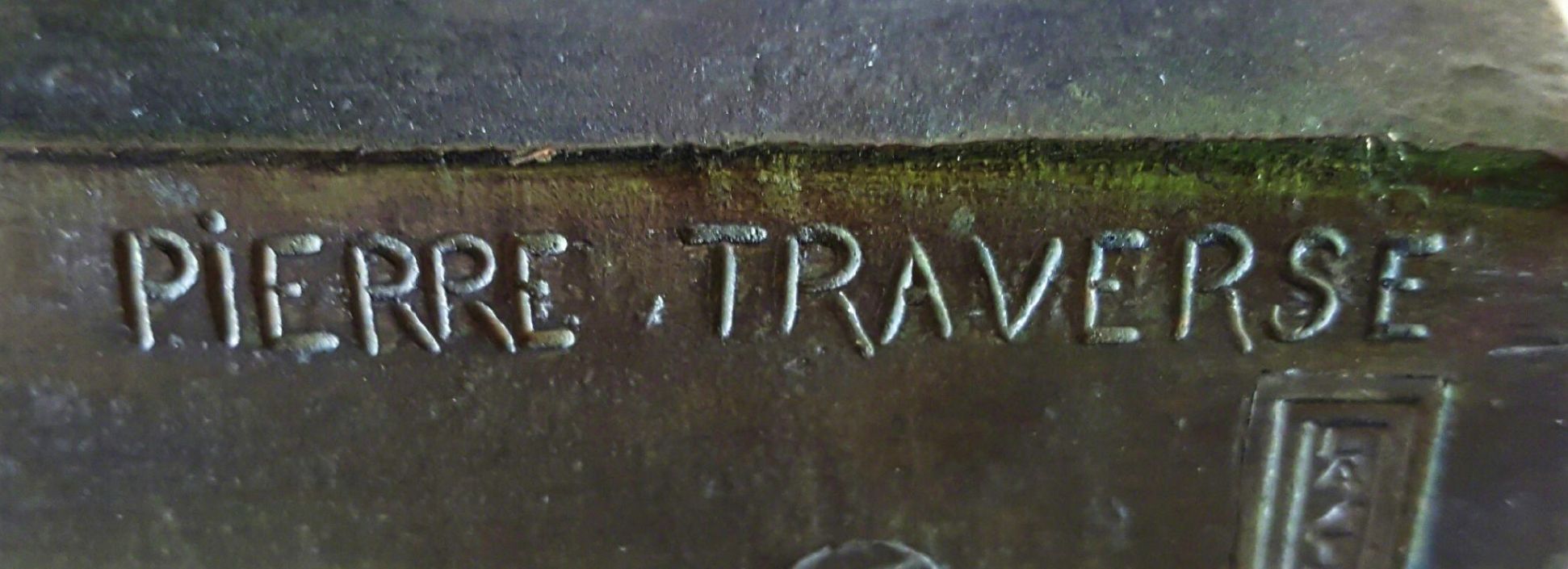
Connaître la valeur d’une œuvre
S’il s’avère que vous possédez une création de Pierre Traverse ou que vous pensez en posséder un, n’hésitez pas à demander une évaluation gratuite moyennant notre formulaire sur notre site internet.
Un membre de notre équipe, composée d'experts et de commissaires-priseurs agréés, vous contactera promptement afin de vous communiquer l’estimation de la valeur marchande de votre pièce, sans oublier de vous transmettre les informations ad hoc sur celle-ci.
Si vous souhaitez vendre votre bien, vous serez également accompagnés par nos spécialistes afin de bénéficier d’alternatives pour le céder au meilleur prix possible, prenant en compte les inclinations du marché.
Réponse en - de 24h
A découvrir dans la même thématique
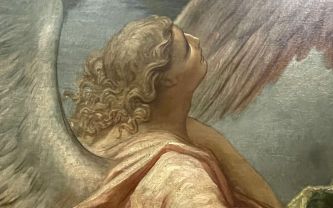
Cote et valeur des peintures, dessins, gravures de Gustave D...
Gustave Doré est un illustrateur, peintre et graveur du XIXème siècle romantique. Ses oeuvres ont beaucoup de valeur et une cote haute aux enchères.
En savoir plus >
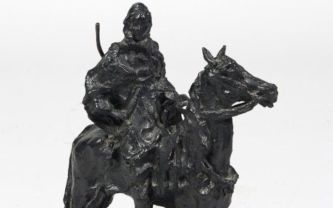
Cote et valeur 2024 des sculptures, dessins, peintures de Pa...
Paul Troubetzkoy est un sculpteur russe du XXème siècle qui a produit des oeuvres dont la cote et la valeur sont élevées sur le marché des enchères.
En savoir plus >
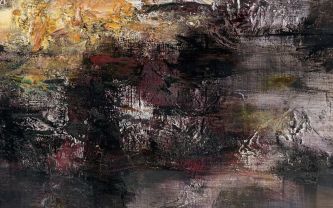
Cote et valeur des tableaux, dessins, peintures de Yan Wang...
Yan Wang Cheng est un peintre de l'abstraction chinoise qui a produit des oeuvres dont la cote et la valeur sont extrêmement élevées aux enchères.
En savoir plus >
Site sécurisé, anonymat conservé
Commissaire-priseur et expert agréé par l'État
Estimations gratuites et certifiées
